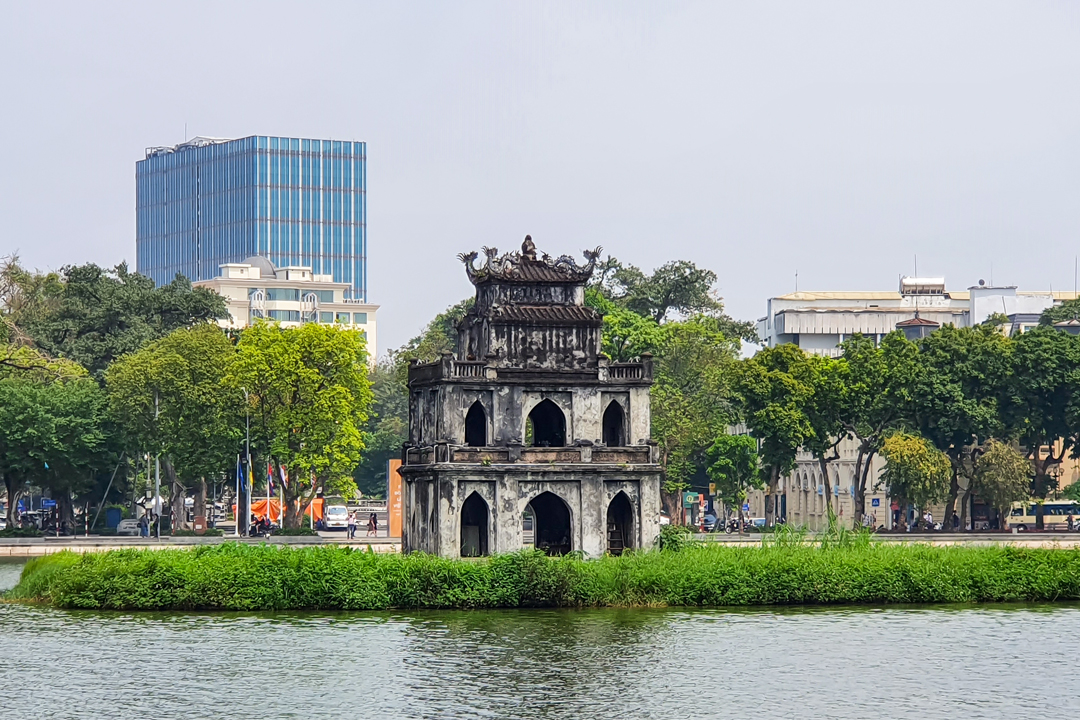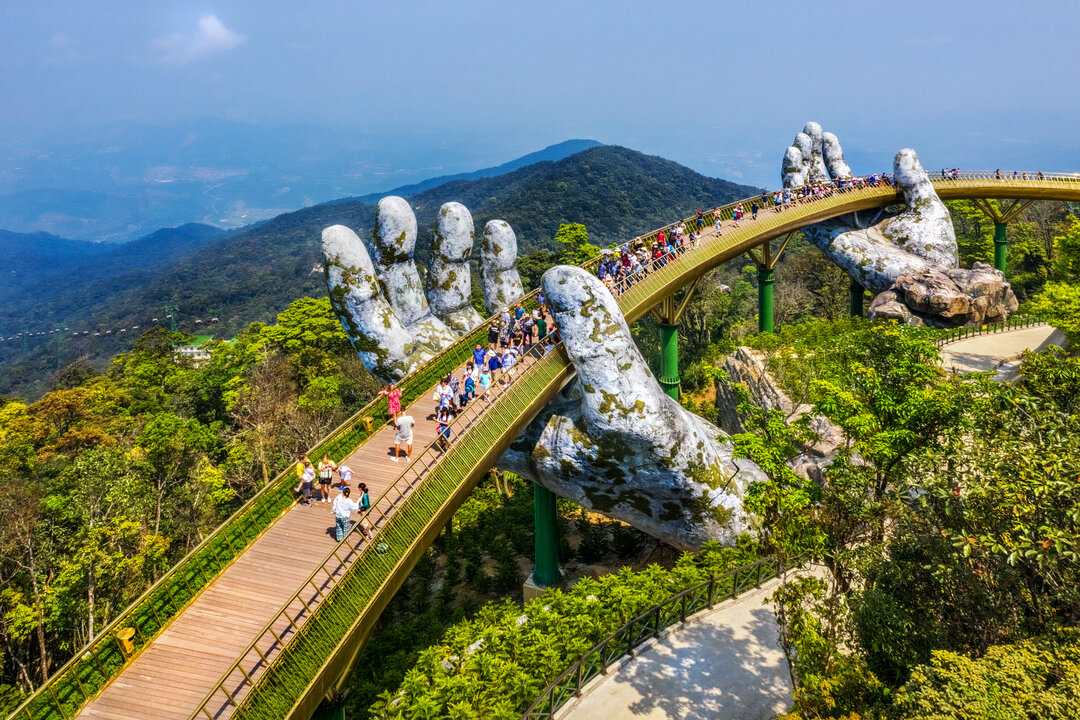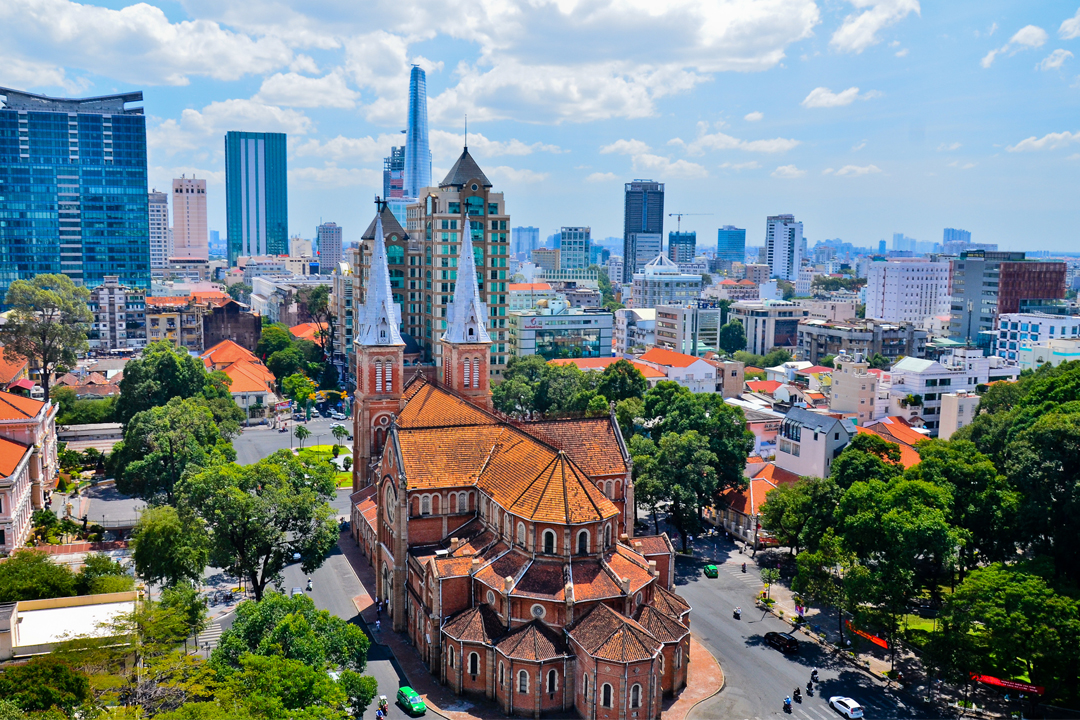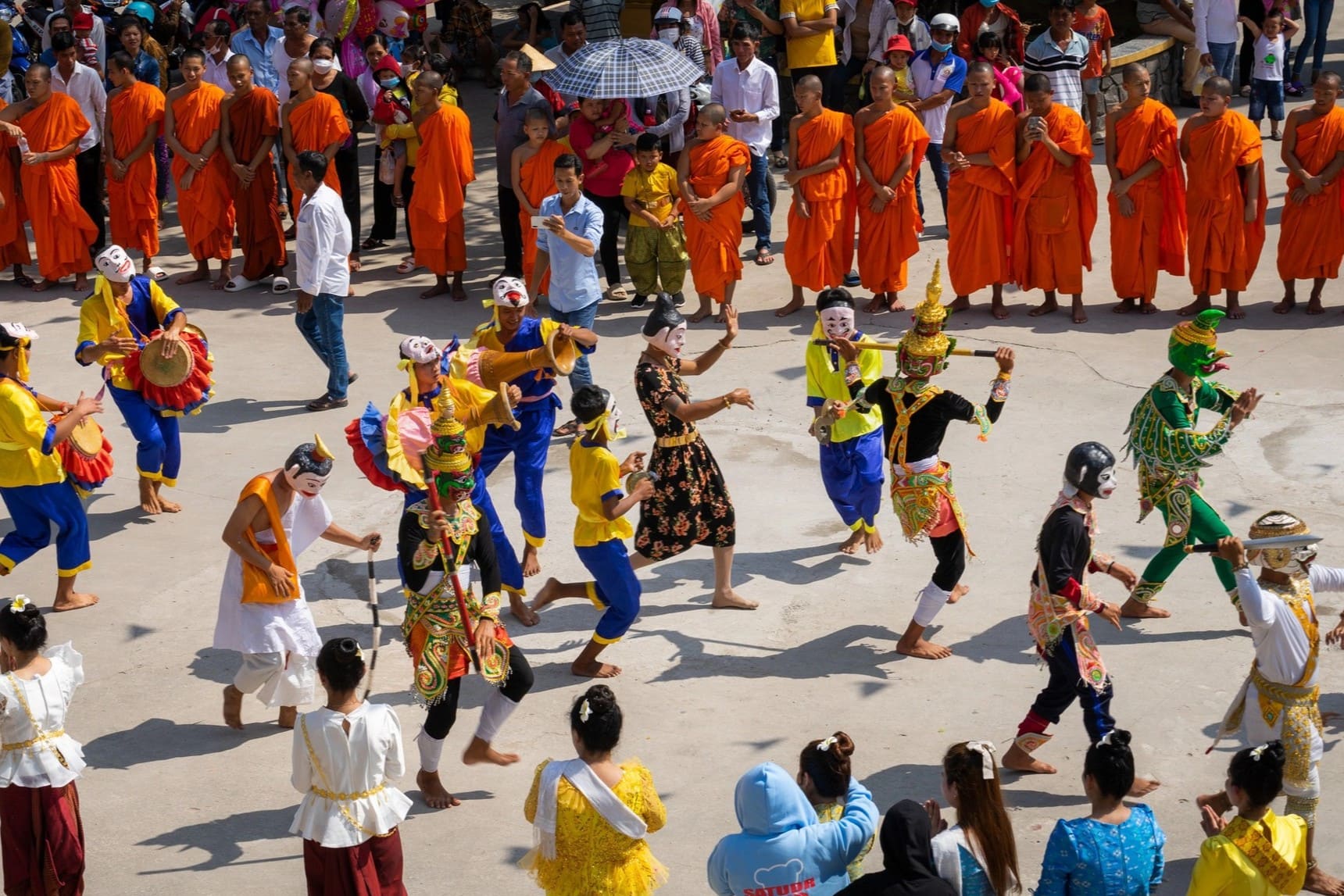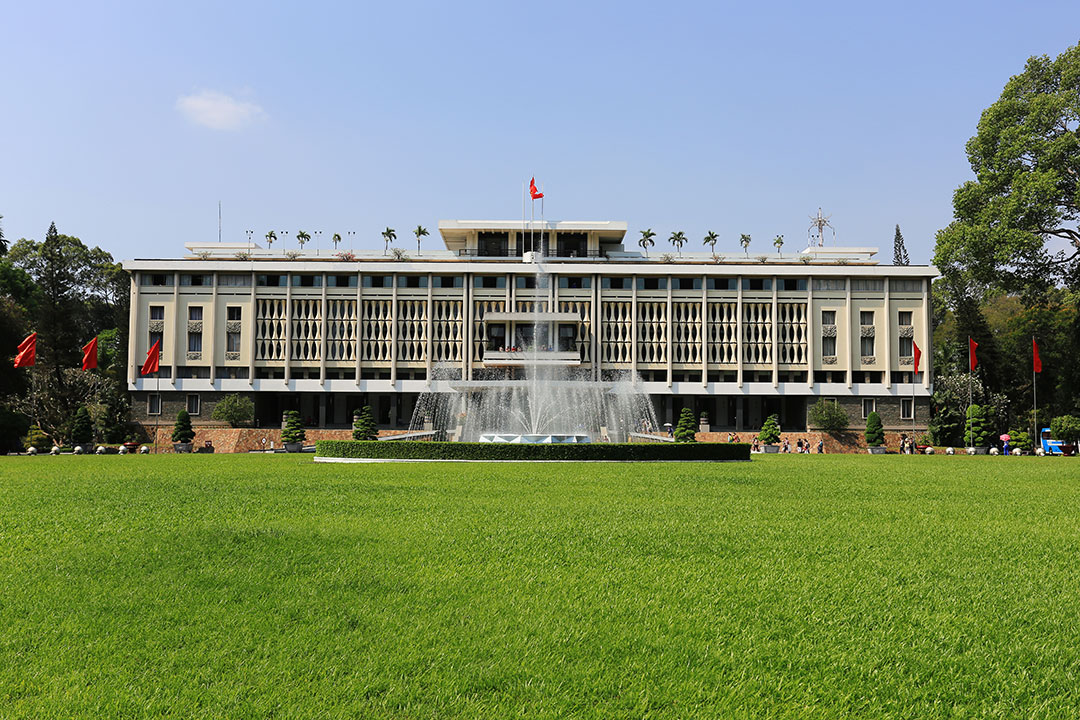Independence Palace: History, Architecture, Things To Do & Travel Guide
Nestled in the vibrant core of District 1, Independence Palace, also called the Reunification Palace, is a must-visit destination for those curious about Vietnam's modern identity. This iconic landmark played a central role during pivotal moments of the 20th century, particularly the fall of Saigon in 1975. Beyond its historical gravitas, the palace’s striking mid-century modernist design reflects a bold architectural vision, harmonizing form and function in a uniquely Vietnamese way.
Today, travelers to Ho Chi Minh City can explore the grand halls, command bunkers, and lush gardens of this former presidential residence. Each space unveils stories of power, negotiation, and change. In this article of GTrip, we explore the history, architecture, things to do, and travel guide of the Independence Palace. Let’s dive into this meaningful and beautiful attraction.
History of the Independence Palace
The Independence Palace, also known as the Reunification Palace, is a significant historical landmark at 135 Nam Ky Khoi Nghia Street, Ben Nghe Ward, District 1, Ho Chi Minh City. Its history began with its predecessor, Norodom Palace, built by the French between 1868 and 1873 as a residence for the Governor-General of Indochina. After the French defeat at Dien Bien Phu in 1954, Vietnam was divided, and Norodom Palace was renamed Independence Palace by President Ngo Dinh Diem in 1955. By 1962, after a bombing attack, the main section of the left wing and the palace gate were severely damaged. Unable to restore the structure, President Ngo Dinh Diem decided to demolish it and commission an entirely new building on the same site.
During the Vietnam War, Independence Palace functioned as the command center of the South Vietnamese government and the official residence and office of the President. Inside, it contained vital communication hubs and war rooms, most notably an underground bunker, highlighting its critical role in military strategy and national defense.
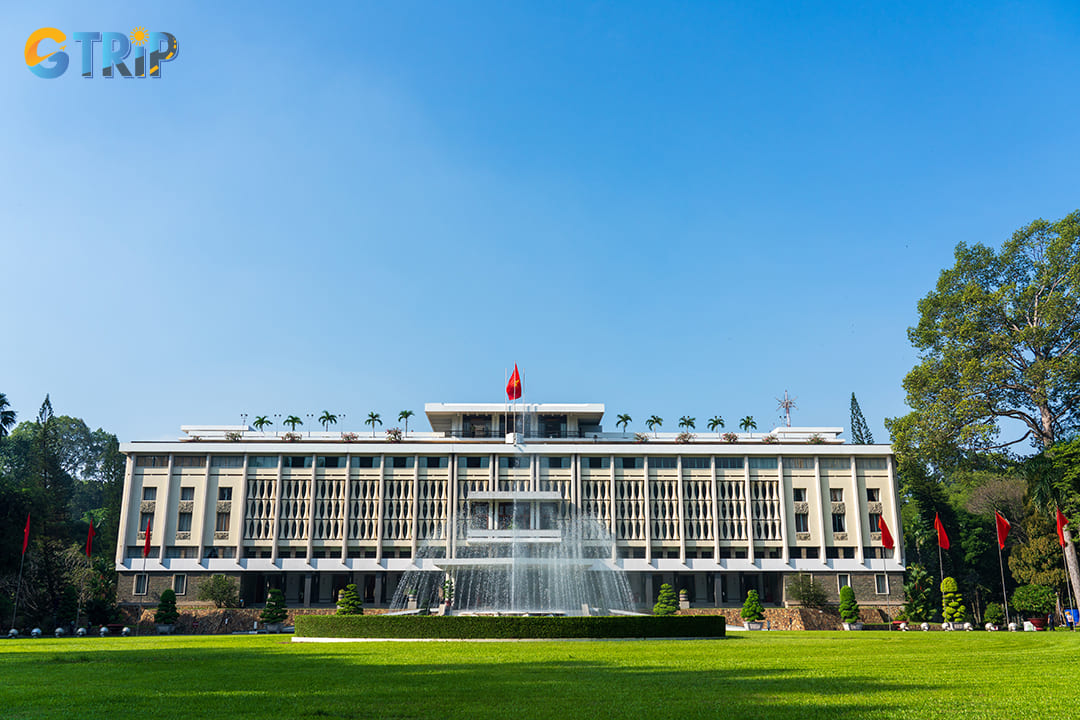
During the Vietnam War, the Independence Palace served as the headquarters for the South Vietnamese government
The palace was the stage for several key events leading to the reunification of Vietnam. The most significant of these was the Fall of Saigon on April 30, 1975, when a North Vietnamese tank crashed through its gates. This marked the end of the Vietnam War and the collapse of the South Vietnamese government. This event symbolically ended years of war and division, paving the way for the unification of North and South Vietnam. The handover of the palace from South to North Vietnamese forces marked a decisive shift in Vietnam's political landscape, symbolizing a new era and a political fusion of ideologies.
In the years following reunification, the Independence Palace transitioned from a bastion of war to a beacon of learning and cultural heritage. Its transformation into a museum ensured the preservation of Vietnam's rich history, offering both locals and tourists an educational insight into the past. The museum maintains the original state of many rooms, providing tourists with an authentic historical experience. Guided tours and exhibits provide narratives that contextualize the significance of the palace, enhancing its value as a historical landmark. The palace's rich history embodies the resilience and spirit of a nation striving for unity and peace, making it a crucial cultural and educational site.
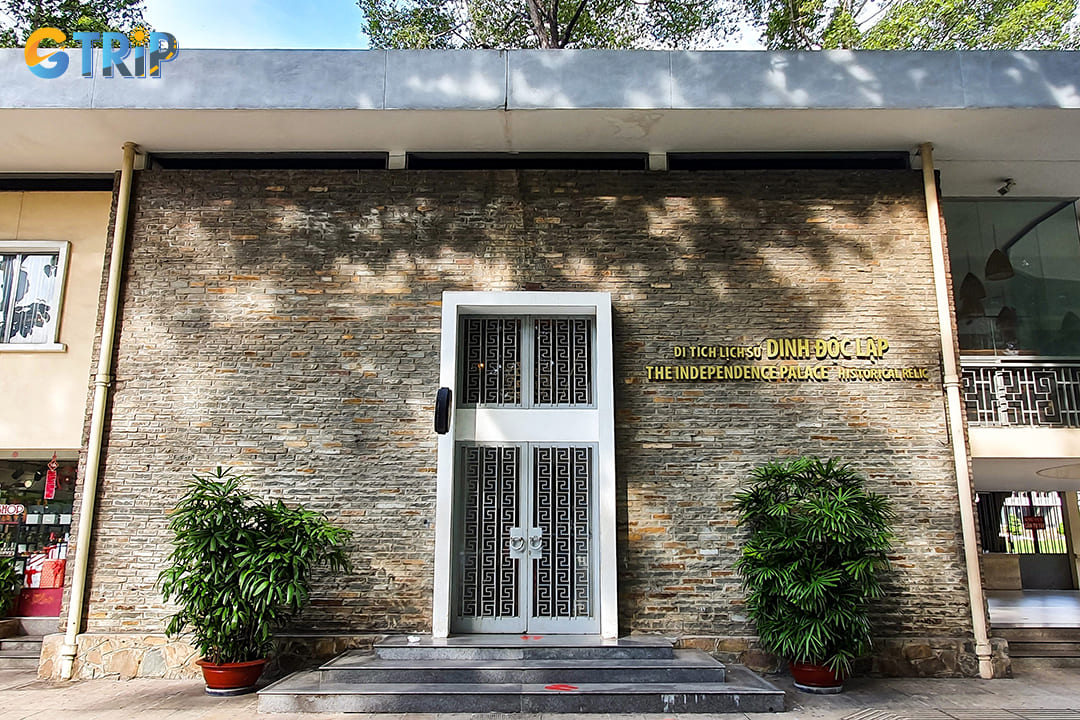
The Independence Palace transitioned from a bastion of war to a beacon of learning and cultural heritage
The architecture of Independence Palace
The Independence Palace, designed by renowned architect Ngo Viet Thu, is a masterpiece of modernist architecture in Vietnam. It seamlessly blends traditional Vietnamese elements with modernist principles. Constructed between 1962 and 1966, it replaced the old Norodom Palace with a larger and distinctly modernist structure.
The palace's architectural style emphasizes simplicity, functionality, and the integration of natural elements. Its design features open, sprawling spaces, flat surfaces, and smooth lines that create a sense of openness and fluidity. Large glass windows allow natural light to flood the interiors while offering unobstructed views of the surrounding gardens, blurring the boundaries between indoor and outdoor spaces. The use of geometric shapes, including repetitive rectangular forms and symmetrical design elements, enhances the overall sense of order and balance.
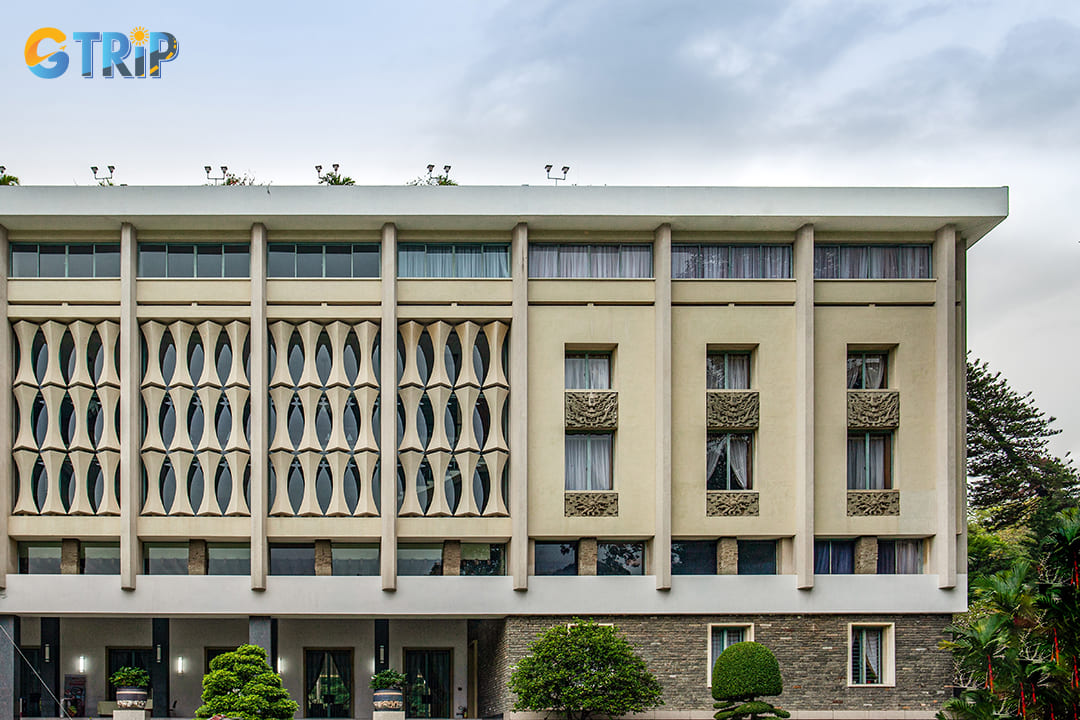
The palace's architectural style emphasizes simplicity, functionality, and the integration of natural elements
Ngo Viet Thu infused the palace with cultural and symbolic meaning, drawing from Eastern philosophy and Vietnamese traditions. The layout of the building is designed to resemble the Chinese character for “fortunate” or “auspicious”. Various architectural elements symbolize values such as luck, freedom, loyalty, humanity, intelligence, martial morality, and prosperity. The exterior stone latticework, inspired by the gates of the former imperial capital of Hue, adds aesthetic beauty while regulating sunlight entering the building.
Structurally, the palace features a central core flanked by radial wings, forming a cross-shaped layout that optimizes space utilization and facilitates movement within the complex. Constructed primarily from reinforced concrete, the building was designed for durability, reflecting the political instability of the era. A notable feature is the rooftop helipad, highlighting its dual function as both a governmental headquarters and a strategic command center during the Vietnam War.
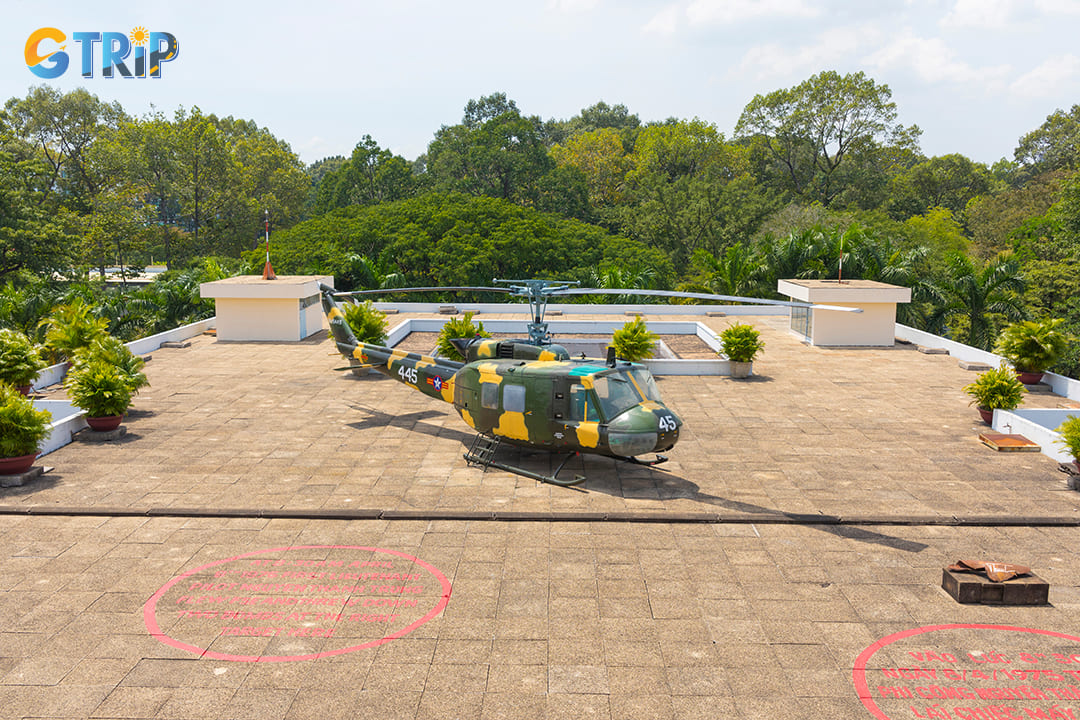
A notable feature is the rooftop helipad, highlighting its dual function as both a governmental headquarters and a strategic command center
The palace is set within lush green spaces, with carefully designed gardens and ornamental plants that exemplify early green architecture in Vietnam. A semicircular fountain adorned with lotus flowers in the front yard serves as a symbol of peace, freedom, and stability. The building integrates modern technologies such as elevators, large-format tempered glass, ventilation, and air conditioning systems to ensure comfort. Additionally, fire protection and communication systems are in place to enhance safety and efficiency in emergencies.
4 things to do at Independence Palace
Independence Palace, also known as Reunification Palace, is not just an architectural landmark but also a historically significant site in Ho Chi Minh City. You can explore its beautifully preserved interiors, learn about Vietnam’s history, and enjoy the surrounding gardens. Here are some of the key activities to experience when visiting Independence Palace.
1. Explore the grand reception rooms
One of the highlights of visiting Independence Palace is exploring its lavishly designed reception rooms, where high-ranking officials once hosted important meetings and banquets. The grand halls are decorated with elegant furniture, chandeliers, and artworks that reflect the mid-20th-century aesthetic. Each room served a distinct function, from the Cabinet Room where critical decisions were made to the Banquet Hall that hosted state dinners. The Throne Room, in particular, is a must-see with its regal red carpet, elaborate golden decor, and a large ceremonial chair where the President of South Vietnam once sat during formal gatherings.
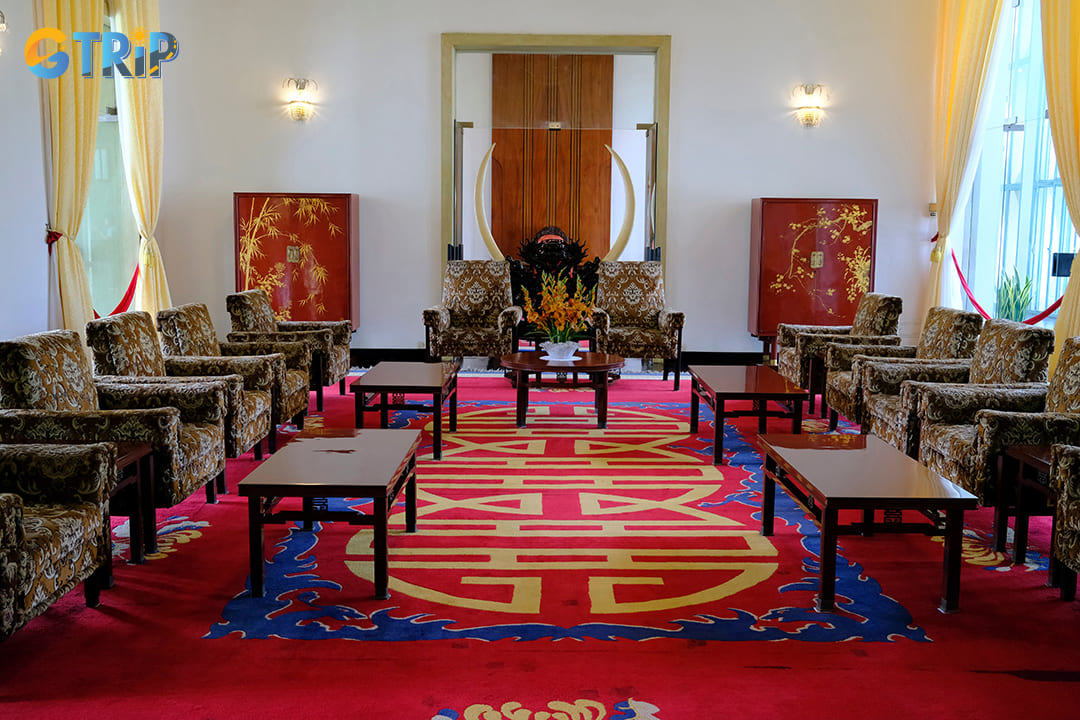
One of the highlights of visiting Independence Palace is exploring its lavishly designed reception rooms
2. Visit the presidential living quarters
Independence Palace was not only a political hub but also the private residence of the South Vietnamese president and his family. The living quarters offer a glimpse into the daily life of the country’s former leaders. These areas include a dining room, bedrooms, and recreational spaces, all furnished in a 1960s style that has been carefully preserved.
You can see personal items such as vintage telephones, books, and artwork, which provide insight into the lifestyle of the presidential family. One of the most fascinating parts of the residence is the entertainment room, complete with a private cinema and a game room where guests are entertained during social gatherings.
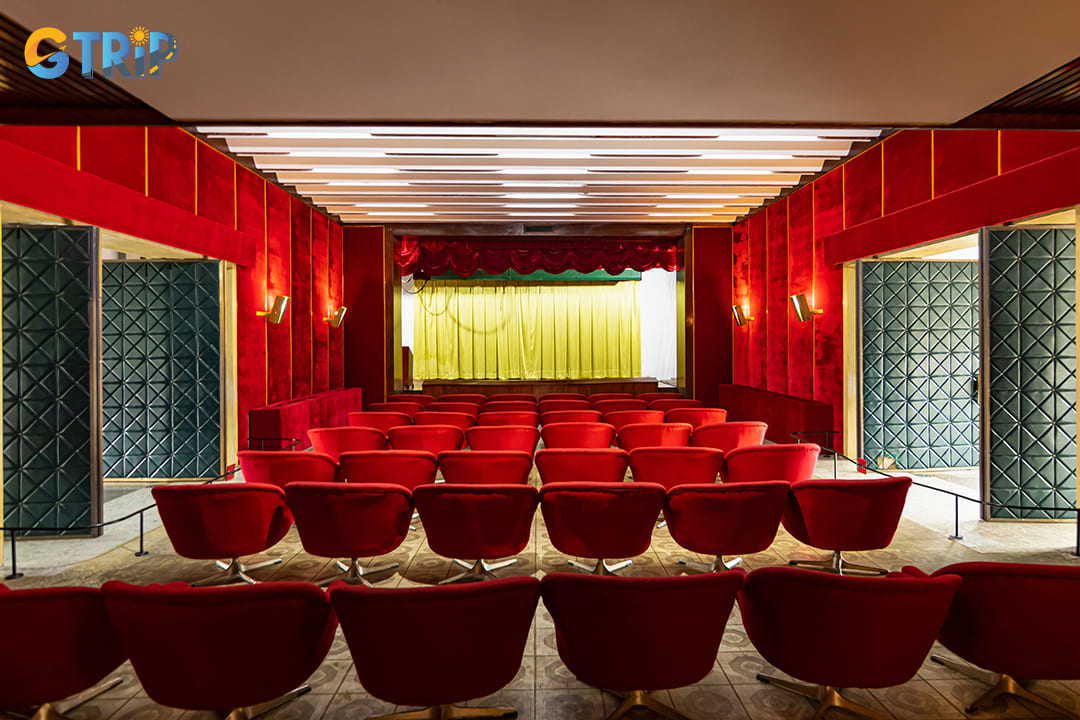
One of the most fascinating parts of the residence is the entertainment room with a private cinema
3. Discover the underground bunker
A visit to the underground bunker beneath Independence Palace is a step back in time to the Vietnam War era. This secret bunker, built to serve as a command center in case of attacks, remains in its original state.
The bunker features war maps, communication equipment, and a network of tunnels connecting different rooms. You can explore the president’s emergency office, the radio transmission room, and military strategy rooms where critical wartime decisions were made. The atmosphere inside the bunker, with its dim lighting and thick concrete walls, gives a chilling reminder of the tense historical moments that took place here.
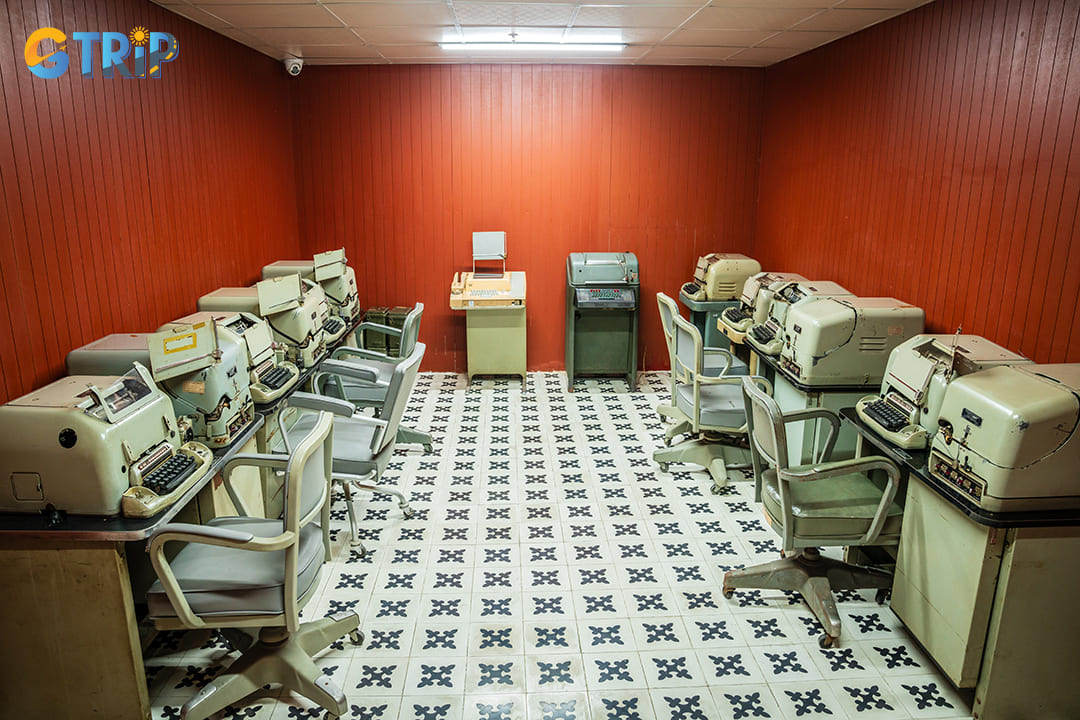
The bunker features war maps, communication equipment, and a network of tunnels connecting different rooms
4. Stroll through the gardens and outdoor exhibits
Surrounding the palace are beautifully landscaped gardens that offer a peaceful contrast to the historical significance of the site. A walk through the gardens reveals lush greenery, fountains, and shaded pathways.
One of the notable outdoor exhibits is a display of military vehicles, including tanks and fighter jets, which were used during the Fall of Saigon in 1975. These relics serve as powerful reminders of the country’s turbulent past and provide excellent photo opportunities for tourists. The front lawn, with its large circular fountain, is another iconic spot that adds to the palace’s grandeur and is a great place to relax after exploring the interior.
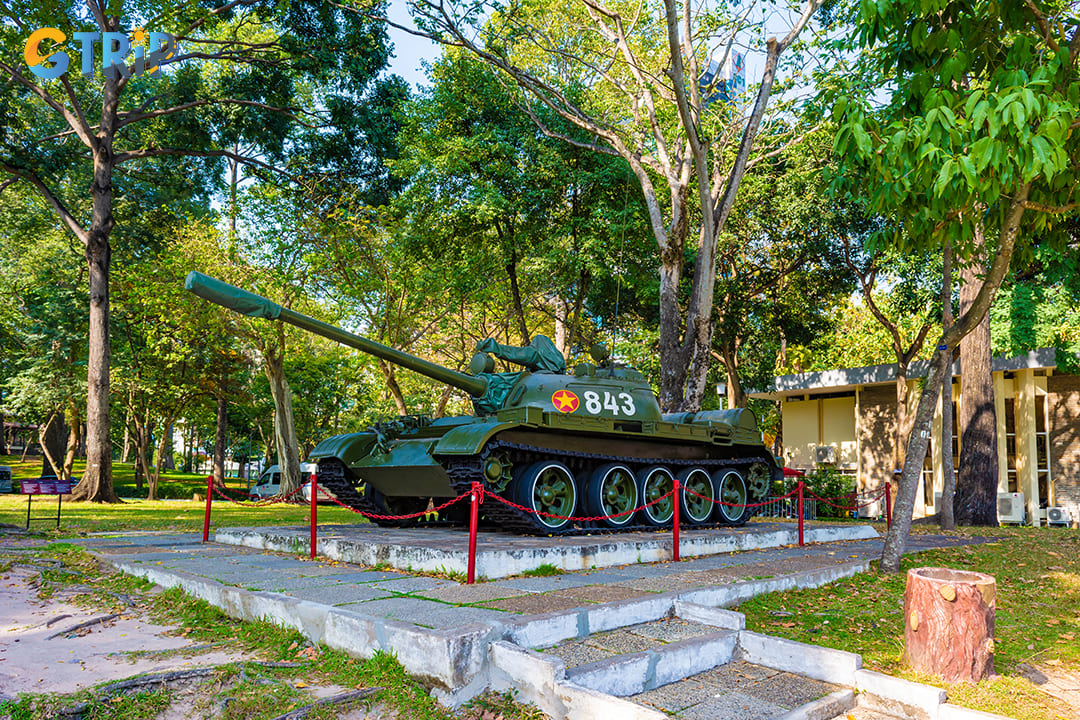
One of the notable outdoor exhibits is a display of military vehicles, including tanks and fighter jets
Visiting options at Independence Palace
Independence Palace offers four types of visiting experiences, tailored to suit different preferences and group sizes:
Electric cart tour around the grounds (approx. 10 minutes)
Covering a vast 12-hectare area filled with lush lawns and old-growth trees, the palace grounds can be comfortably explored by eco-friendly electric carts. This option is ideal for those wishing to avoid long walks or harsh sunlight. Each cart is equipped with an automatic audio guide system that highlights key features and the historical significance of the site.
Self-guided tour
Visitors can freely explore the main building with the help of international-standard signage, detailed information boards, and room labels. This option allows for an in-depth, flexible experience where travelers can take their time discovering the meaning behind each room and key historical milestone.
Audio tour with headphones
Launched in August 2017, the compact and user-friendly audio tour system provides engaging commentary tailored to each specific room. It is available in 10 languages, including English, French, Japanese, Chinese, Korean, German, Spanish, Russian, Thai, and Vietnamese, making it an ideal choice for international guests.
Guided tour with a palace guide
Groups can also choose a guided tour by registering at the information counter, where fees are shared according to the Palace’s regulations. This option is suitable for larger groups, up to 25 adults or 50 children (aged 15 and under).
To complete the visit, guests can enjoy a 30-minute documentary titled “The History of Independence Palace” at a modern in-house screening room. The film includes subtitles in English, French, Japanese, and Chinese. On April 30, additional commemorative activities are also held at this historic venue.
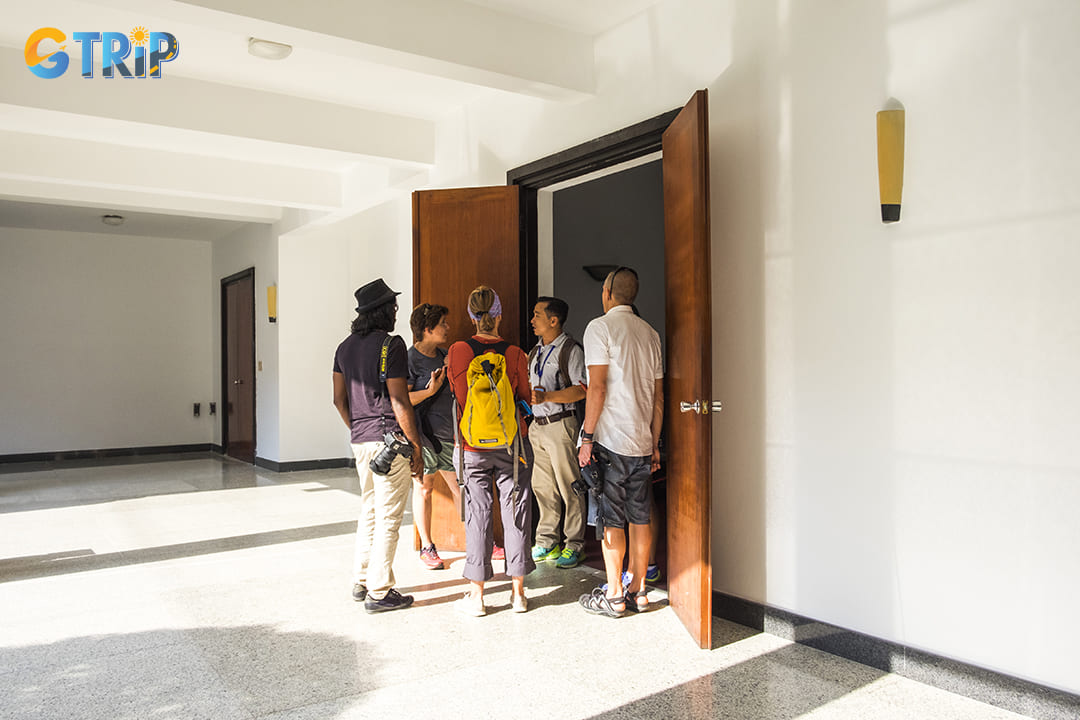
Independence Palace offers four types of visiting experiences, tailored to suit different preferences and group sizes
Hours of operation and ticket prices of Independence Palace
The Independence Palace is open to visitors daily, including weekends and holidays, except for special occasions that may be announced in advance. Here are the operating hours and ticket details
Operating hours
- Visiting hours: The main building of the Independence Palace is open from 8:00 AM to 4:30 PM. However, you should note that the ticket office closes at 3:30 PM, so it's advisable to purchase tickets before then to ensure entry.
- Exhibition hours: The exhibition hall, "From Norodom Palace to Independence Palace 1868 - 1966", operates from 8:30 AM to 4:30 PM
Ticket prices
The current ticket prices for visiting the Independence Palace are categorized as follows:
| Ticket type | Adults (VND) | Students (VND) | Children (VND) |
|---|---|---|---|
| Ticket to visit the main building of the historical site | 40,000 | 20,000 | 10,000 |
| Ticket to visit the exhibition house "From Norodom Palace to Independence Palace 1868-1966" | 65,000 | 45,000 | 15,000 |
- Students must present a valid student ID to purchase tickets at the discounted rate.
- Children tickets apply to those aged 6 to under 16, and age verification documents may be required if necessary.
- Ticket prices do not include additional services requested by visitors.
- Tickets are sold from 8:00 AM to 3:30 PM, and visiting hours are from 8:00 AM to 4:30 PM daily.
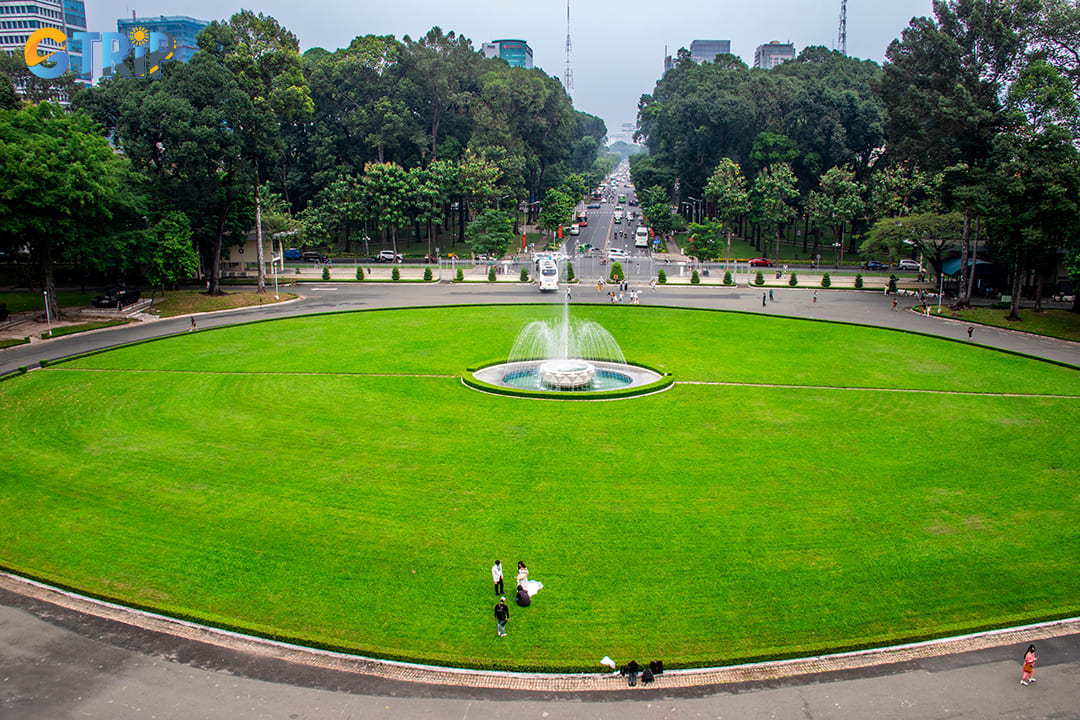
The Independence Palace is open to visitors daily
How to get to Independence Palace?
Independence Palace is centrally located at 135 Nam Ky Khoi Nghia, Ben Thanh Ward, District 1, Ho Chi Minh City. It is easily accessible by various transportation options.
By taxi or ride-hailing services
One of the most comfortable and hassle-free ways to reach Independence Palace is by taking a taxi or using ride-hailing apps such as Grab and Be. These services are widely available in Ho Chi Minh City, and you can book a car or motorbike ride to the palace. The official address to input into these apps is:
Estimated taxi fares from popular locations:
- From Tan Son Nhat International Airport: 15 to 20 minutes (~150,000 VND / ~$6)
- From Ben Thanh Market: 5 minutes (~40,000 VND / ~$1.60)
- From Notre Dame Cathedral: 3 minutes (~30,000 VND / ~$1.20)
By public bus
For budget travelers, Ho Chi Minh City’s bus network provides an economical way to get to Independence Palace. Several bus routes stop near the palace, including:
- Bus 04, 05, 18, 36, 42, and 52: Stop along Nam Ky Khoi Nghia Street, a short walk from the entrance.
- Bus 03 and 19: Stop at Le Duan Street, about a 5-minute walk away.
Bus fare: 5,000 - 20,000 VND (~$0.20 - $0.78 USD) per ride.
By motorbike or bicycle
For those who enjoy riding around the city, renting a motorbike or bicycle is an exciting way to explore. Many rental shops in District 1 offer:
- Motorbike rental: 100,000 - 200,000 VND (~$4 - $8) per day
- Bicycle rental: 50,000 VND (~$2) per day
The palace has parking available nearby, though it's advisable to park at designated lots to avoid fines.
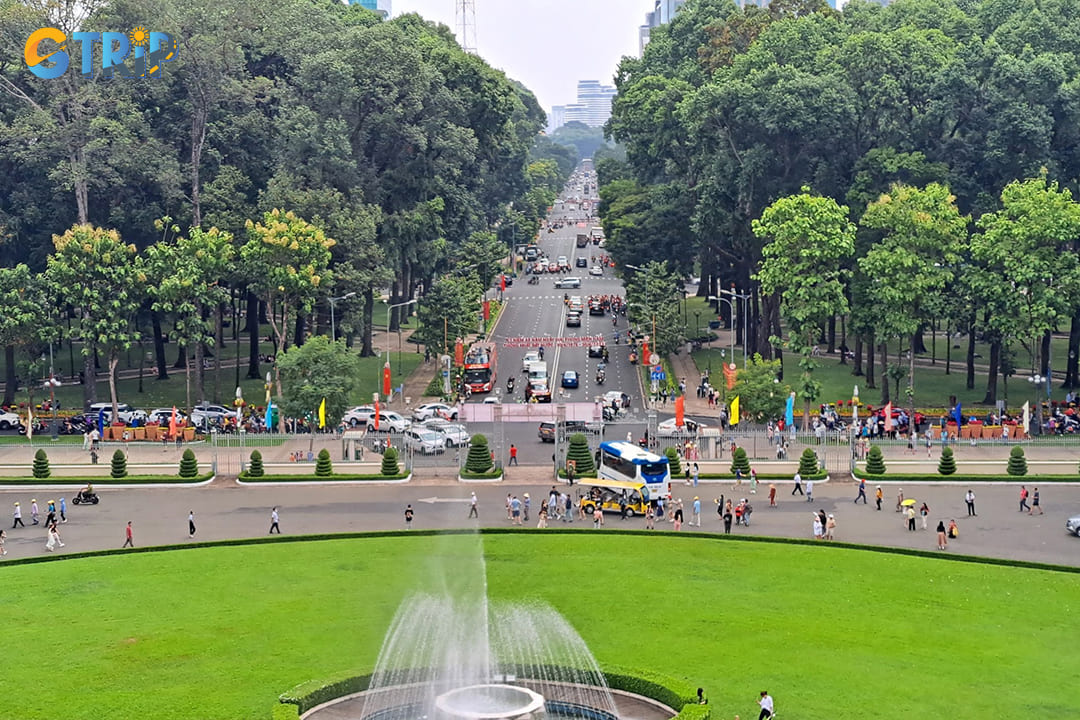
One of the most comfortable and hassle-free ways to reach Independence Palace is by taking a taxi or using ride-hailing apps
By walking
If you're already in District 1, walking to Independence Palace is a great option. The palace is within walking distance from several major attractions:
- Notre Dame Cathedral: 5 minutes (350m)
- Saigon Central Post Office: 7 minutes (500m)
- Ben Thanh Market: 10 minutes (750m)
The area is pedestrian-friendly, with wide sidewalks and plenty of cafés along the way for a quick stop.
By cyclo
For a more cultural experience, you can take a cyclo ride to the palace. These three-wheeled pedicabs offer a slow, scenic journey through Ho Chi Minh City's bustling streets.
Cyclo fare: 50,000 - 100,000 VND (~$1.94 - $4) for a short ride.
Regardless of your mode of transport, getting to Independence Palace is straightforward and convenient. The central location ensures that tourists have multiple options to reach this iconic landmark.
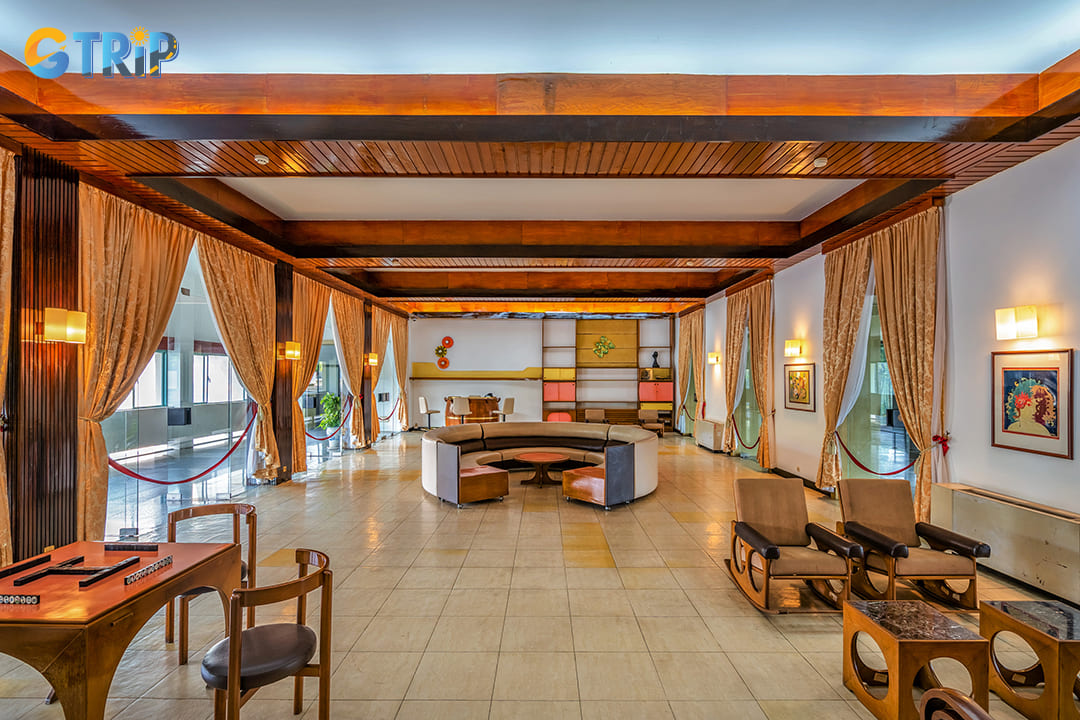
The central location ensures that tourists have multiple options to reach this iconic landmark
Nearby attractions from Independence Palace
After or before visiting this landmark, you can consider exploring some nearby attractions to expand your experience.
War Remnants Museum (550 m)
The War Remnants Museum is a poignant and essential stop for anyone seeking to understand Vietnam's turbulent past. Located near the Independence Palace, this museum offers an unflinching look at the Vietnam War, highlighting its devastating impacts on both the country and its people. Originally opened in 1975 as the Exhibition House for Crimes of War and Aggression, the museum was later renamed in 1990 to reflect a broader focus on the consequences of the war and its global significance.
One of the museum’s most compelling aspects is its extensive collection of historical artifacts. They include military equipment, photographs, and personal belongings from soldiers and civilians. These items provide a vivid portrayal of the harsh conditions endured during the war. The Agent Orange Effects Exhibit is another deeply moving display, shedding light on the ecological and human toll of chemical warfare, with powerful personal stories from those who suffered its aftermath. Additionally, the Prisoner of War Artifacts section offers a chilling glimpse into the brutal conditions faced by POWs, with reconstructions of infamous prisons like Hoa Lo and Phu Quoc.
Visiting the War Remnants Museum is more than just a historical experience, it is a chance to reflect on the resilience of the Vietnamese people and the far-reaching effects of war. It serves as a significant educational resource and invites tourists to gain a deeper global awareness of the human cost of conflict. The museum’s powerful exhibits complement the insights gained from nearby historical sites, providing a comprehensive view of Vietnam’s wartime history.
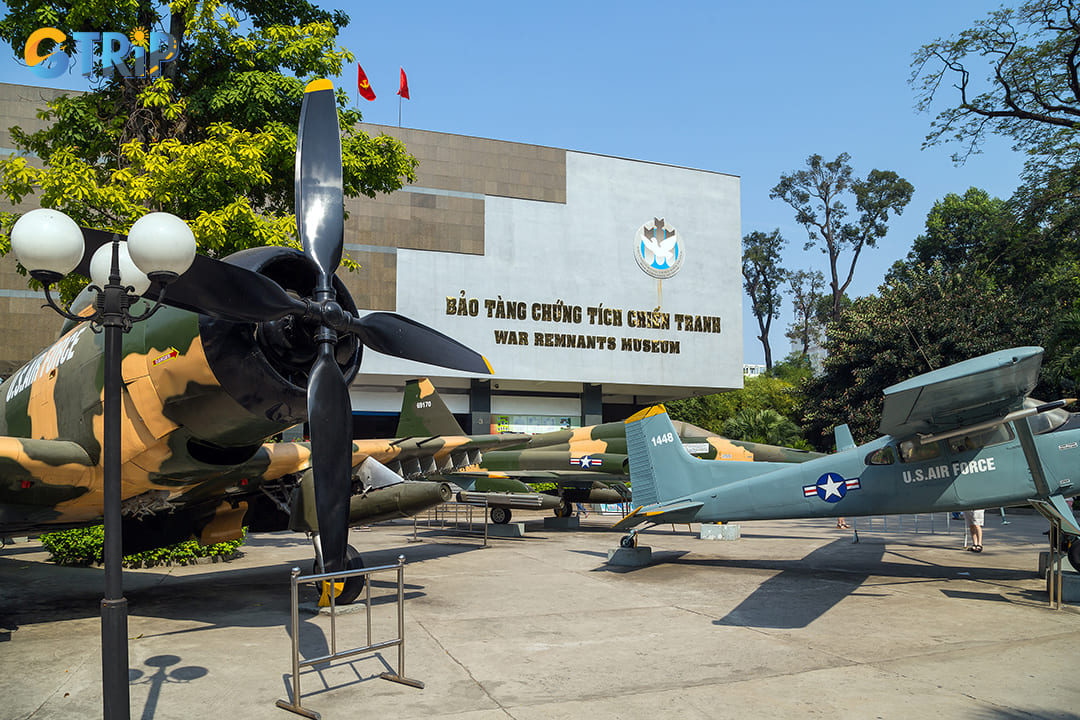
The War Remnants Museum is a poignant and essential stop for anyone seeking to understand Vietnam's turbulent past
Saigon Central Post Office
The Saigon Central Post Office is a must-visit landmark in Ho Chi Minh City, renowned for its stunning French colonial architecture and rich historical significance. Designed by the famous engineer Gustave Eiffel and completed in 1891, the post office stands as one of the finest examples of colonial-era design in Vietnam. Its grand exterior, with ornate arches and decorative details, captures the elegance of the past. The beautifully preserved interior, featuring vaulted ceilings and intricate tilework, transports tourists back in time.
Beyond its architectural beauty, the Saigon Central Post Office remains an active hub for both locals and tourists, offering a unique blend of historical charm and modern-day functionality. It’s not just a place to send mail, you can explore the historical displays that recount the city’s past, take in the vintage telecommunication equipment, and marvel at the giant portrait of Ho Chi Minh.
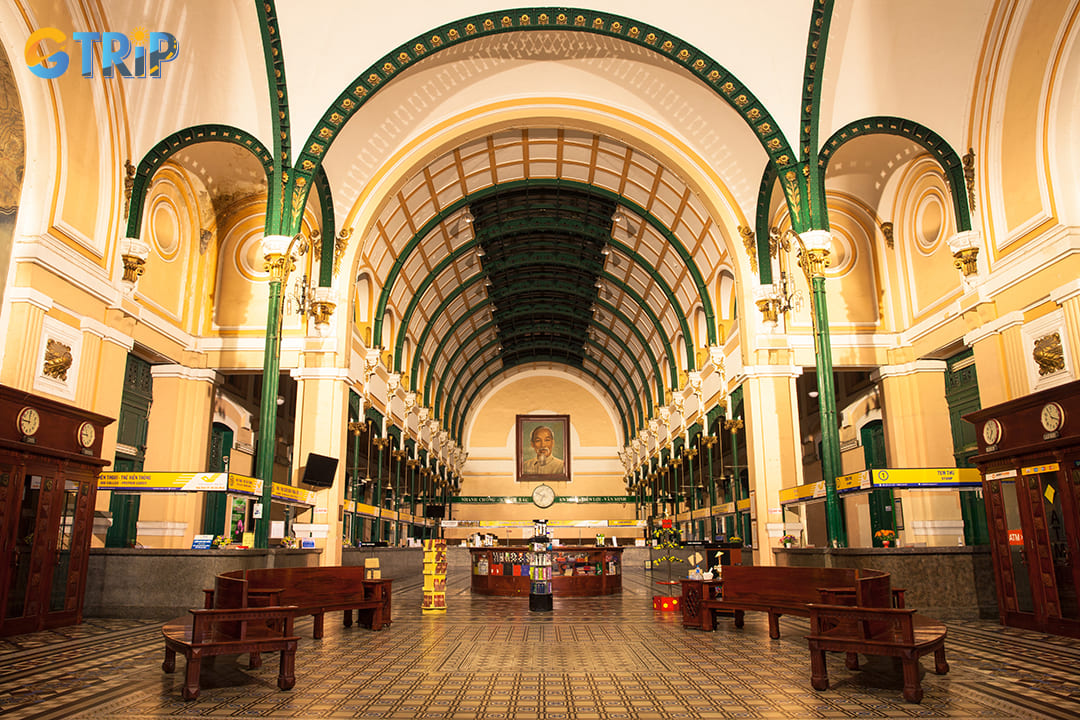
The Saigon Central Post Office is a must-visit landmark, renowned for its stunning French colonial architecture and rich historical significance
Saigon Opera House (1 km)
Another nearby architectural landmark is the Saigon Opera House, also known as the Municipal Theatre. Built in 1897, this French colonial building stands as a remarkable example of classical European architecture, blending Baroque and Romanesque styles. Its ornate facade, grand staircases, and elegant interiors make it a stunning sight for tourists to admire.
The Opera House is not just an architectural masterpiece, it is also a vibrant cultural venue. It hosts a variety of performances, including opera, ballet, and concerts, offering a rich experience for those with an interest in the arts. The Saigon Opera House is a must-visit for anyone looking to explore the cultural heart of Ho Chi Minh City.
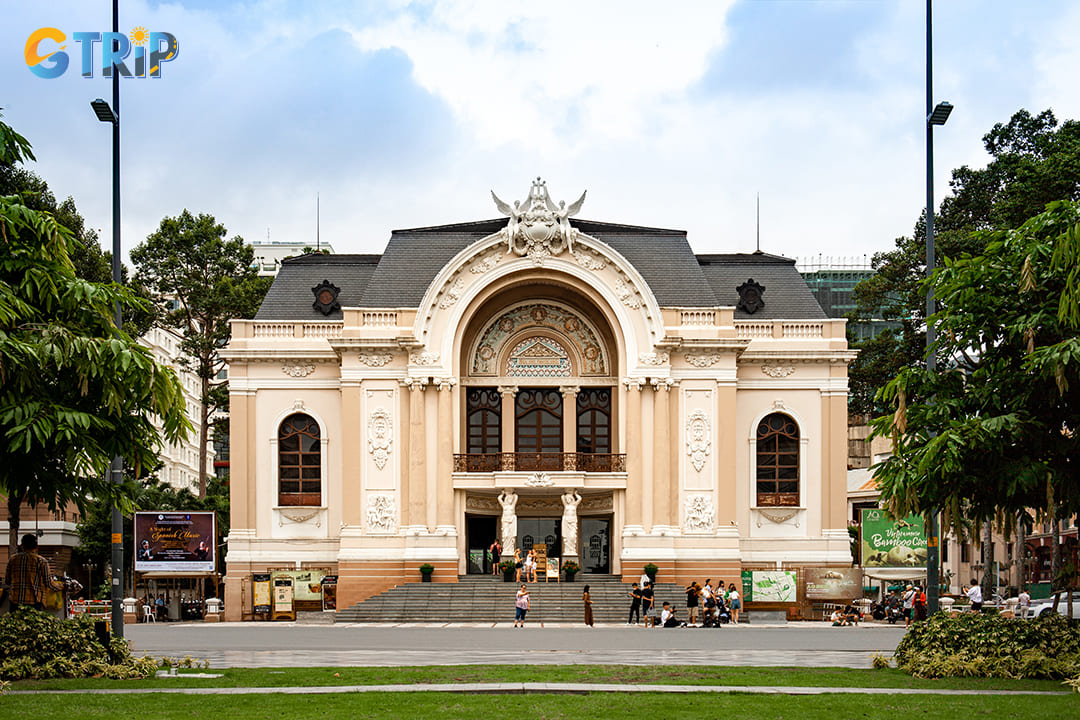
The Opera House is not just an architectural masterpiece, it is also a vibrant cultural venue
Frequently Asked Questions about Independence Palace
Tourists often have questions about Independence Palace (Reunification Palace) due to its historical significance and visitor policies. Below are some of the most frequently asked questions with concise answers.
1. Can I take photos inside Independence Palace?
Yes, but flash photography and tripods are prohibited to protect exhibits. Some rooms may have additional restrictions.
2. Is Independence Palace wheelchair accessible?
Yes, the Independence Palace is wheelchair accessible. The palace features ramps and elevators that allow tourists with mobility challenges to navigate its multiple levels. There are two elevator shafts, one at each end of the building, which provide access to most areas except for the rooftop terrace and the tunnel system.
3. Are guided tours available at the palace?
Yes. Free guided tours in English, French, and Vietnamese are available at scheduled times. Audio guides in multiple languages can also be rented.
4. What are the security rules for visitors?
- Large bags may be checked or stored in lockers.
- Tourists must stay on designated paths and avoid touching artifacts.
5. Are there any restrictions on visitor behavior?
Yes. Tourists should maintain decorum, avoid loud noises, and follow staff instructions for a smooth experience.
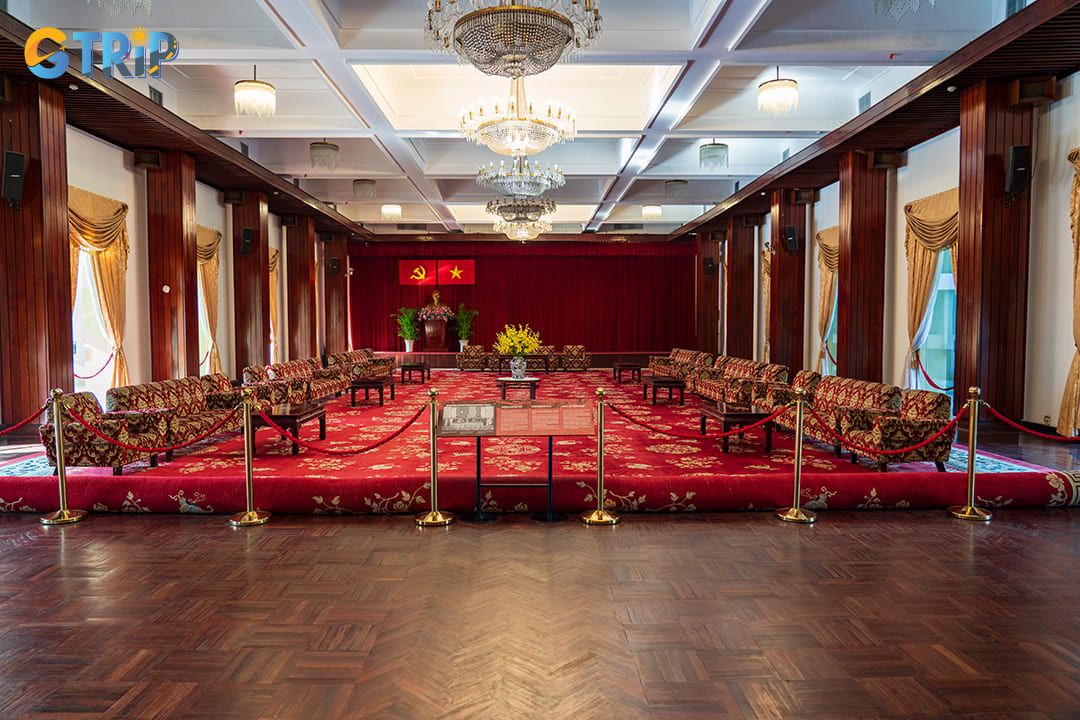
Tourists should maintain decorum, avoid loud noises, and follow staff instructions for a smooth experience
6. Is there a dress code for visiting Independence Palace?
No strict dress code, but respectful attire is recommended, especially for indoor areas.
7. Can I bring food and drinks inside?
No. Eating and drinking inside the palace are not allowed, but there are cafes nearby.
8. Are there restrooms and other visitor facilities?
Yes. Clean restrooms, seating areas, and information desks are available throughout the palace.
9. Is Independence Palace suitable for children?
Yes. The site is family-friendly, but young children should be supervised, especially in historical exhibits and staircases.
10. Can I book tickets online?
Yes. Tickets are available at the entrance. However, if you visit the palace on the weekend, holidays, or in a big group, you should book tickets online in advance.
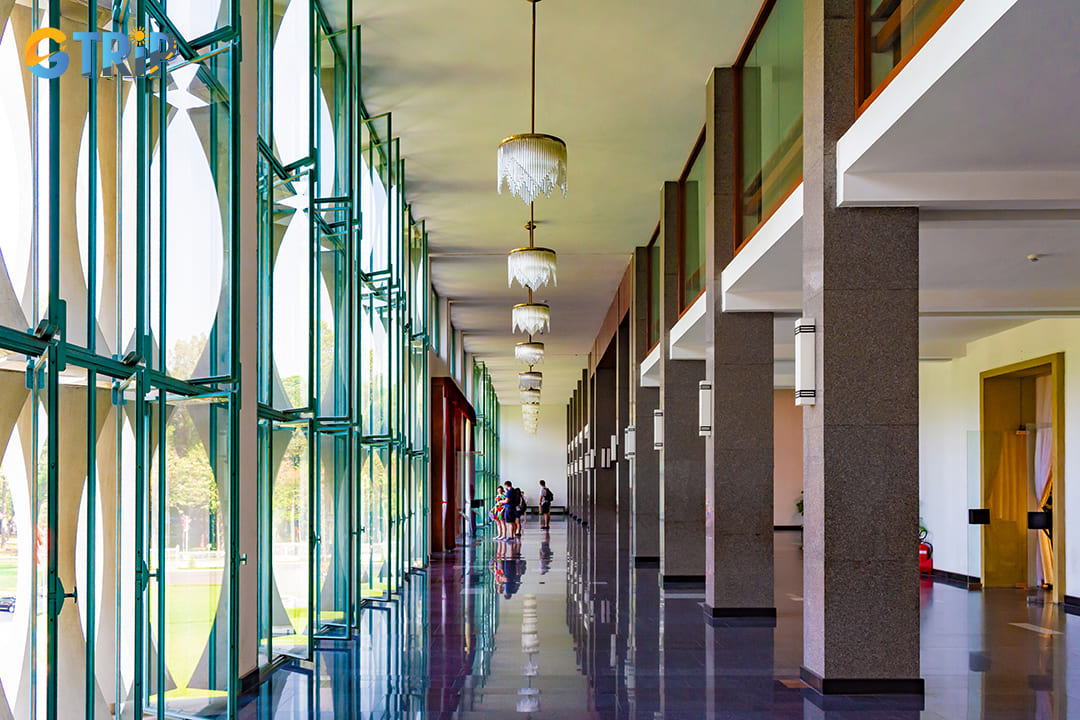
The site is family-friendly, but young children should be supervised, especially in historical exhibits and staircases
Independence Palace stands as a powerful symbol of Vietnam’s history, resilience, and transformation. From its origins as Norodom Palace to its role as the seat of the South Vietnamese government, this landmark has witnessed some of the most pivotal moments in the country’s past. Today, it serves as a preserved historical site where you can explore grand reception halls, underground bunkers, and lush gardens while gaining insight into Vietnam’s complex journey toward reunification. As one of Ho Chi Minh City’s most significant attractions, the palace remains a must-visit destination that continues to educate and inspire generations to come. If you are interested in exploring this landmark or any attractions in the city, book Ho Chi Minh City tours of GTrip - Vietnam Travel Agency to get great support from our experienced tour guides.

